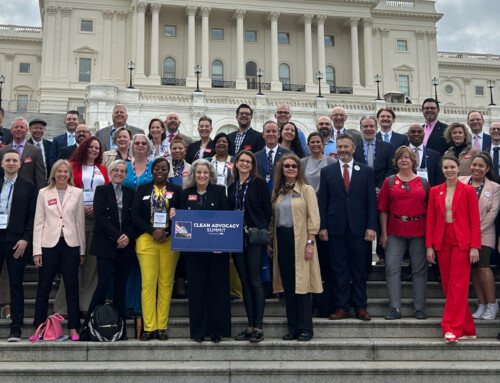Turning Waste into Opportunity
Recently, I was catching up with a client in one of my higher education accounts. They were cleaning out dorm furniture and discarding hundreds of desks, dressers, cabinets, and mattresses. I asked why they weren’t donating the items, and the response was they didn’t know how.
I’ve always hated waste. Depression-era grandparents raised me. My grandmother was a genius when it came to managing the house finances. Even when they were financially secure, she still not only watched her spending carefully but also created very little waste. Everything owned was necessary and used. While growing up, I learned a love for repurposing and being creative with what I had. So, it bothers me when I see waste on a large scale.
Facilitating donations
While working as an EVS (environmental services) director in healthcare, I had opportunities to partner with several homeless shelters where we donated linen that was no longer appropriate for patient use. What the homeless shelters couldn’t use, the animal shelters happily accepted. We collaborated with repurposing companies to sell used furnishings like overbed tables, beds, and non-clinical supplies. In many cases, we also found overseas medical facilities where we could donate supplies, furnishings, and even patient apparel. It took time to facilitate these contacts and relationships, but these practices were essential to our sustainability, community, and beyond.
In the case of the discarded furnishings from the college, those items—all usable—were in an impoverished area. Community residents would have most likely relished the opportunity to get furnishings or even mattresses for free. So how do we, as building service contractors (BSCs), help our customers be more sustainable and divert waste? What can we do?
Identify local organizations and charities
Look for organizations and charities that accept donations. These could include:
- Homeless shelters: Many shelters need furniture and bedding.
- Refugee assistance programs: These programs often require household items for new arrivals.
- Community centers: Local community centers might welcome donations for families in need.
- Nonprofits: Organizations like Goodwill, Salvation Army, and Habitat for Humanity often accept furniture and mattresses.
Reach out to schools and churches
Many local schools and churches have programs to help families in need or might know of individuals who could use the items.
Contact local government agencies
City or county human services departments often have resources and connections to distribute donations.
Utilize online platforms
Online platforms play a crucial role in helping distribute and recycle items that may still be useful to someone else. Here are a few:
- Freecycle: A network of people giving and getting items for free in their towns.
- Craigslist: The “free” section is an excellent way to give away items locally.
- Nextdoor: A neighborhood-focused social network that can help spread the word quickly.
- Facebook Marketplace: Facebook Marketplace can reach hundreds of residents who may be in need.
Coordinate with local universities
Other nearby colleges might have needs or know of students who could benefit from the furniture.
Plan donation events
Organize events where community members can come and take the items they need.
Implementation tips
- Create a donation plan: Establish clear guidelines on how items will be collected, stored, and distributed.
- Leverage social media: Use platforms like Facebook and Twitter to spread the word.
- Engage volunteers: Reach out to student organizations, community groups, and local volunteers to help with logistics.
- Partner with moving companies: Some companies might offer discounted rates for transporting donated items.
By taking these steps, my client—and other institutions facing similar situations—can turn a potential waste issue into a valuable opportunity to support the community. Not only does this approach help those in need, but it also fosters a culture of sustainability and responsibility. It’s a win-win solution that aligns with the values of reducing waste and making the most of available resources, much like my grandparents taught me.


















